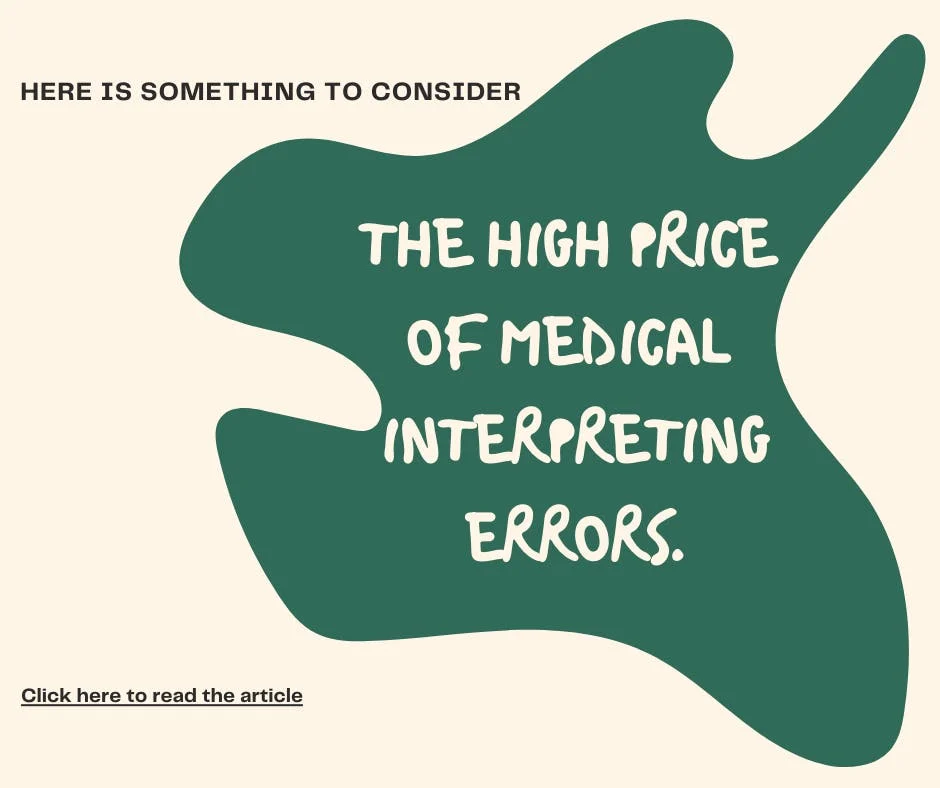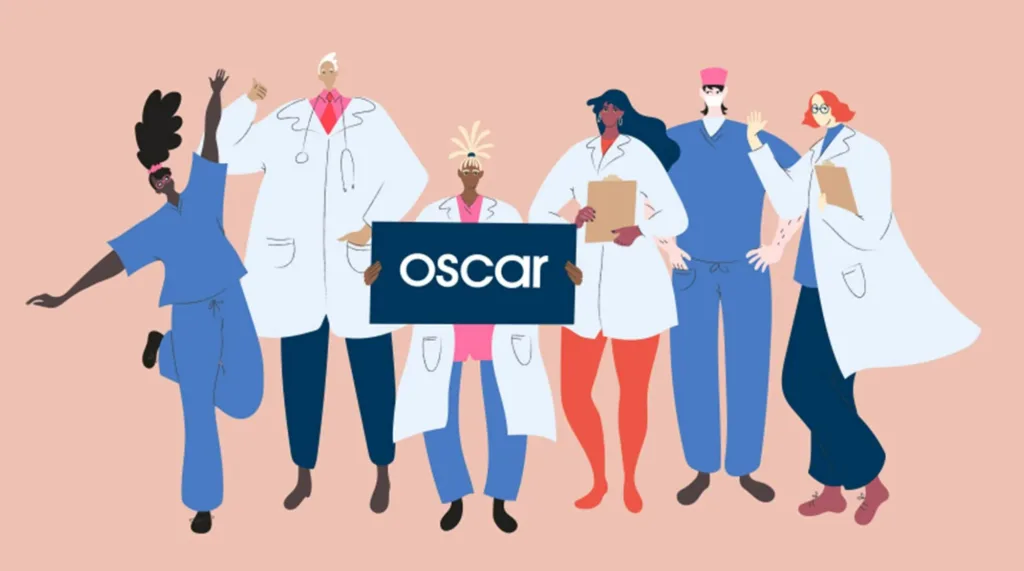

Healthcare trailblazers, let’s talk about Reaching Hispanics.
Many healthcare organizations talk about engaging or reaching Hispanics but often stop when they realize it takes time and effort.
However, it’s essential to remember that engaging with my community requires cultural sensitivity and awareness.
- We are highly diverse, with rich traditions and varied language preferences.
When healthcare organizations/providers make assumptions or overlook cultural aspects, this can lead to mistrust and disengagement, which undermines the goals of any health initiative.
Therefore, respecting the unique needs of the Hispanic community helps build stronger relationships and improve health outcomes.
So, let’s focus on what truly matters regarding healthcare.
The PEOPLE we serve by prioritizing their needs, values, and experiences.
In this edition, I will cover a whole enchilada of insights about a few important factors that should be avoided when reaching Hispanics in healthcare.
Let’s taco ‘bout it.
Healthcare trailblazers,
Many healthcare organizations talk about engaging with the Hispanic community but often stop when they realize it takes time and effort.
However, it’s essential to remember that engaging with my community requires cultural sensitivity and awareness.
- We are highly diverse, with rich traditions and varied language preferences.
When healthcare organizations/providers make assumptions or overlook cultural aspects, this can lead to mistrust and disengagement, which undermines the goals of any health initiative.
Therefore, respecting the unique needs of the Hispanic community helps build stronger relationships and improve health outcomes.
So, let’s focus on what truly matters regarding healthcare.
How can you make healthcare Hispanic-friendly within your organization?
Let’s taco ‘bout it.
![]()
Three Insights 🌶️
I. Avoid Assumptions about language proficiency
One of the most common mistakes healthcare organizations make when reaching Hispanics is assuming we all speak or prefer English. The reality is that language preferences vary widely within the Hispanic community.
Many individuals feel more comfortable and better understood when communicated with in Spanish.
- This is especially true for older generations and recent immigrants who might not be fluent in English.
If these language preferences are Ignored, it can lead to significant miscommunication and a lack of engagement with healthcare services, and patients may not fully understand their medical conditions, treatment options, or medication instructions, leading to poor health outcomes.
Additionally, they might feel disrespected or undervalued if their language needs are not met, which can lead to a breakdown of trust.
Now, to effectively engage with Hispanics.
It’s crucial to recognize and address these language needs and provide bilingual resources, such as informational brochures, consent forms, and digital content, which can greatly enhance understanding and comfort.
II. Avoid interpreters at all costs
Avoid using interpreters whenever possible, when reaching Hispanics. While interpreters may appear to be a solution for overcoming language barriers, they can sometimes result in misunderstandings and inaccuracies.
Additionally members of my community may not feel comfortable sharing details through an interpreter, which can lead to incorrect medical backgrounds.
Instead, strive to have healthcare professionals who are bilingual and can directly communicate with patients in their language whenever possible.
Although interpreters can be helpful, they may create a barrier between the patient and the healthcare provider, causing patients to withhold information if they believe it will be transmitted through a party.
This issue could be resolved by communicating with healthcare professionals. Furthermore, these professionals can recognize subtleties that interpreters might overlook due to their understanding of the context and ability to establish connections with patients, thereby making them feel appreciated.
Believe it or not.
Establishing this rapport is essential for building trust and motivating patients to comply with advice and attend follow-up appointments.
Lastly, while interpreters have their place, relying on bilingual healthcare professionals whenever possible is definitely the best approach, as it improves communication, builds trust, and ensures my community receives the best possible care.
III. Avoid Cultural Stereotyping
It’s important to avoid stereotyping Hispanics based on generalized cultural traits, as every member of my community has unique experiences and backgrounds, and of course, cultural stereotypes can be offensive and alienating, leading to misunderstandings and making them feel unwelcome.
In my opinion,
Moving beyond stereotypes helps create a more inclusive and welcoming environment, as taking the time to understand each patient’s unique perspective can make a big difference in their healthcare experience.
I’m sure you are already aware of this, but cultural stereotyping happens when we make broad assumptions about a group of people based on limited information.

Here is a great example.
Assuming all Hispanics have the same customs, beliefs, or language preferences can be very misleading.
In case you did not know.
This kind of thinking not only disrespects the rich diversity within the Hispanic community but also harms the patient-provider relationship.
This outcome should be avoided if your organization genuinely aims to support the Hispanic community.
Insights
I. Avoid Assumptions about language proficiency
One of the most common mistakes healthcare organizations make is assuming that all Hispanics speak or prefer English. The reality is that language preferences vary widely within the Hispanic community.
Many individuals feel more comfortable and better understood when communicated with in Spanish.
- This is especially true for older generations and recent immigrants who might not be fluent in English.
If these language preferences are Ignored, it can lead to significant miscommunication and a lack of engagement with healthcare services, and patients may not fully understand their medical conditions, treatment options, or medication instructions, leading to poor health outcomes.
Additionally, they might feel disrespected or undervalued if their language needs are not met, which can lead to a breakdown of trust.
Now, to effectively engage with Hispanics.
It’s crucial to recognize and address these language needs and provide bilingual resources, such as informational brochures, consent forms, and digital content, which can greatly enhance understanding and comfort.
II. Avoid interpreters at all costs
Avoid using interpreters whenever possible. While interpreters may appear to be a solution for overcoming language barriers, they can sometimes result in misunderstandings and inaccuracies.
Additionally members of my community may not feel comfortable sharing details through an interpreter, which can lead to incorrect medical backgrounds.
Instead, strive to have healthcare professionals who are bilingual and can directly communicate with patients in their language whenever possible.
Although interpreters can be helpful, they may create a barrier between the patient and the healthcare provider, causing patients to withhold information if they believe it will be transmitted through a party.
This issue could be resolved by communicating with healthcare professionals. Furthermore, these professionals can recognize subtleties that interpreters might overlook due to their understanding of the context and ability to establish connections with patients, thereby making them feel appreciated.
Believe it or not.
Establishing this rapport is essential for building trust and motivating patients to comply with advice and attend follow-up appointments.
Lastly, while interpreters have their place, relying on bilingual healthcare professionals whenever possible is definitely the best approach, as it improves communication, builds trust, and ensures my community receives the best possible care.
III. Avoid Cultural Stereotyping
It’s important to avoid stereotyping Hispanics based on generalized cultural traits, as every member of my community has unique experiences and backgrounds, and of course, cultural stereotypes can be offensive and alienating, leading to misunderstandings and making them feel unwelcome.
In my opinion,
Moving beyond stereotypes helps create a more inclusive and welcoming environment, as taking the time to understand each patient’s unique perspective can make a big difference in their healthcare experience.
I’m sure you are already aware of this, but cultural stereotyping happens when we make broad assumptions about a group of people based on limited information.

Here is a great example.
Assuming all Hispanics have the same customs, beliefs, or language preferences can be very misleading.
In case you did not know.
This kind of thinking not only disrespects the rich diversity within the Hispanic community but also harms the patient-provider relationship.
This outcome should be avoided if your organization genuinely aims to support the Hispanic community.
![]()
Two Actionable Steps 🌮
I. Implement Bilingual Resources
To bridge language gaps, ensure all health communication materials, from brochures to digital content are available in both English and Spanish.
This accessibility shows respect for the community’s language preferences, enhancing comprehension, and making information easily available in both languages is a simple yet powerful step toward better engagement.
When patients can read and understand health materials in their preferred language, they are more likely to feel valued and understood.
This not only helps in delivering the intended health messages effectively but also builds a stronger connection between healthcare providers and the community.
Additionally, as simple as it sounds.
Bilingual resources demonstrate a commitment to inclusivity and can significantly improve patient satisfaction and trust.
II. Set Measurable Goals
Developing a 100% Spanish program can significantly enhance healthcare access and engagement for Spanish-speaking patients. Of course, such a program should include Spanish-speaking healthcare providers, educational materials, and support services.
Here’s how to start one for your organization.
- Spanish-Speaking Healthcare Providers: Hire or train healthcare providers who are fluent in Spanish. Having providers who can communicate directly with patients in their preferred language helps build trust and ensures a clear understanding of medical advice and treatment plans. Consequently, making patients feel more comfortable and confident when they can speak freely and be understood without the need for translation.
- Educational Materials: Develop and distribute educational materials in Spanish. This includes brochures, pamphlets, and digital content covering common health topics and preventative care. Please ensure that all materials are culturally relevant and address health concerns prevalent in the Hispanic community.
- Support Services: Offer support services in Spanish, including counseling, appointment scheduling, and follow-up care. Here, ensure all touch points, from reception to aftercare, are conducted in Spanish. This approach will demonstrate a strong commitment to meeting the needs of Spanish-speaking patients and provide a seamless experience.
- Culturally Relevant Health Education: Tailor health education programs to the cultural practices and beliefs of the Hispanic community. Remember to use culturally appropriate examples and narratives to make the information relatable and easier for them to understand, including nutrition, exercise, and managing chronic conditions, all presented in a way that resonates with Hispanic cultural values.
In short, offering a completely Spanish-language option will help patients feel more comfortable and confident in their interactions with healthcare providers.
Ensuring that all aspects of the program, from reception to follow-up care, are conducted in Spanish will demonstrate a strong commitment to meeting the needs of Spanish-speaking patients.
Actionable Steps
I. Implement Bilingual Resources
To bridge language gaps, ensure all health communication materials, from brochures to digital content are available in both English and Spanish.
This accessibility shows respect for the community’s language preferences, enhancing comprehension, and making information easily available in both languages is a simple yet powerful step toward better engagement.
When patients can read and understand health materials in their preferred language, they are more likely to feel valued and understood.
This not only helps in delivering the intended health messages effectively but also builds a stronger connection between healthcare providers and the community.
Additionally, as simple as it sounds.
Bilingual resources demonstrate a commitment to inclusivity and can significantly improve patient satisfaction and trust.
II. Set Measurable Goals
Developing a 100% Spanish program can significantly enhance healthcare access and engagement for Spanish-speaking patients. Of course, such a program should include Spanish-speaking healthcare providers, educational materials, and support services.
Here’s how to start one for your organization.
- Spanish-Speaking Healthcare Providers: Hire or train healthcare providers who are fluent in Spanish. Having providers who can communicate directly with patients in their preferred language helps build trust and ensures a clear understanding of medical advice and treatment plans. Consequently, making patients feel more comfortable and confident when they can speak freely and be understood without the need for translation.
- Educational Materials: Develop and distribute educational materials in Spanish. This includes brochures, pamphlets, and digital content covering common health topics and preventative care. Please ensure that all materials are culturally relevant and address health concerns prevalent in the Hispanic community.
- Support Services: Offer support services in Spanish, including counseling, appointment scheduling, and follow-up care. Here, ensure all touch points, from reception to aftercare, are conducted in Spanish. This approach will demonstrate a strong commitment to meeting the needs of Spanish-speaking patients and provide a seamless experience.
- Culturally Relevant Health Education: Tailor health education programs to the cultural practices and beliefs of the Hispanic community. Remember to use culturally appropriate examples and narratives to make the information relatable and easier for them to understand, including nutrition, exercise, and managing chronic conditions, all presented in a way that resonates with Hispanic cultural values.
In short, offering a completely Spanish-language option will help patients feel more comfortable and confident in their interactions with healthcare providers.
Ensuring that all aspects of the program, from reception to follow-up care, are conducted in Spanish will demonstrate a strong commitment to meeting the needs of Spanish-speaking patients.
![]()
One Piece of Advice 💃
Healthcare organizations should invest in comprehensive cultural competence training for all staff members to better understand, respect, and effectively respond to the diverse backgrounds, traditions, and values within the Hispanic community.
What is best,
This training provides healthcare professionals with the necessary skills and knowledge to navigate cultural nuances, including beliefs about health and illness, common practices, and respectful communication styles.
Consequently, avoiding misunderstandings builds stronger relationships and enhances patient satisfaction and adherence to medical advice.
Ultimately, this investment fosters an inclusive environment where Hispanic patients feel valued and understood, leading to improved health outcomes and quality of care.
Piece of Advice
Healthcare organizations should invest in comprehensive cultural competence training for all staff members to better understand, respect, and effectively respond to the diverse backgrounds, traditions, and values within the Hispanic community.
What is best,
This training provides healthcare professionals with the necessary skills and knowledge to navigate cultural nuances, including beliefs about health and illness, common practices, and respectful communication styles.
Consequently, avoiding misunderstandings builds stronger relationships and enhances patient satisfaction and adherence to medical advice.
Ultimately, this investment fosters an inclusive environment where Hispanic patients feel valued and understood, leading to improved health outcomes and quality of care.
![]()
Conclusion 🤝🏽
Successfully reaching Hispanics in healthcare requires avoiding assumptions, respecting cultural diversity, and recognizing the vital role of family.
To achieve this, it is essential to implement bilingual resources, start a 100% Spanish program, and actively engage with the community.
Believe it or not.
These efforts will foster trust and improve health outcomes for my community, ensuring that we all provide the best possible care for everyone in our diverse communities.
Conclusion 🤝🏽
Successfully reaching and serving the Hispanic community in healthcare requires avoiding assumptions, respecting cultural diversity, and recognizing the vital role of family.
To achieve this, it is essential to implement bilingual resources, start a 100% Spanish program, and actively engage with the community.
Believe it or not.
These efforts will foster trust and improve health outcomes for my community, ensuring that we all provide the best possible care for everyone in our diverse communities.






